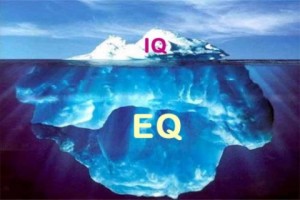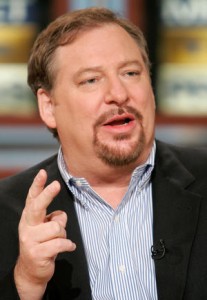Five Traits of Leaders Working at Scale

Effective leaders who create excellence, at scale, in the companies and communities in which we work, have this skill of clearing the way ahead, along with several other key traits. These unique people operating at the highest levels of leadership can divest their ego from the end goal. They have accountability when things go awry but not granular responsibility over individual elements, because the journey toward a shared audacious goal must be emotionally owned by the entire organization to create scale.
Those leaders who can create innovation and excellence at scale possess these five traits:
Sweep away barriers: In order for excellence to grow rapidly and unimpeded, the clutter of antiquated bureaucracy and organizational roadblocks needs to be mitigated or removed entirely. This is the job of the best managers – not to create work that distracts, but instead identify obstacles and have the power and political clout to remove them. Jack Welch likes to use the analogy of the sweepers in a curling match, whose job is to clean the ice in front of the oncoming stone.
Mine the organization for expertise: Lou Platt, the former CEO of HP once said, “If only HP knew what HP knows, we’d be three times more productive.” By that he meant that there was redundancy and untapped capability within their own organization. The best leader creates environments and communication patterns to recognize untapped potential and surface latent expertise. Sir Howard Stringer of Sony, once hosted an international gathering of their engineers just so they could meet and talk, and discover the great capabilities Sony already possessed. Many later thanked Howard, saying they had no idea the depth of skill and knowledge within their own organization.
Build an ownership culture: One of the strongest and fastest ways to build a culture of ownership is to facilitate the building of shared language. When leaders create the circumstances and opportunities for the people around them to define the language use to build projects and collaborate, it creates a higher sense of ownership because suddenly each team member has a vested interest in the eventual outcome. When you have the team name the project, or the outcome, it becomes more about how “we” play the game. This is a stepping stone to building signature solutions. A signature solution is a process or result that has the character, the personality, of it’s contributors baked in to the finished result.
Give credit: A hallmark of a great leader is one who doesn’t want the credit. Or more specifically, doesn’t need the credit. These leaders who can scale excellence recognize that by giving credit, they allow those around them to step to the front – to become leaders themselves. In this way, remarkable leaders are more inclined toward starting something with a greater purpose, and then allowing those more capable people around them to execute on the details and drive scale.
Emphasize process over results: I once had an interview with the Dean of Melbourne Business School, Zeger Degraeve, who has a strong passion for understanding how people make decisions, and create excellence at scale. In our discussion, he strongly reinforced the power of process-driven cultures in eradicating blame tendencies among managers and peers. When individuals and teams are punished on the basis of poor outcomes, despite strong collaboration and decision making, it sends a signal to the rest of the organization that failure is dangerous, and therefore risk should be avoided. Yet inversely, rewards-centered cultures create disincentives for people to make mistakes at a time when making mistakes is the most reliable way of figuring out what works.
Most organizations today create bonus and reward structures that focus on and reward results. If we want an outcome to be repeatable, we instead need to focus on the process that created the result and reward for that. To truly connect with people in our organizations, we should spend more of our time and energy as leaders asking them to examine more closely how they perform their tasks and collaborate as teams, and how the organization, as a whole, operates.

 Jeri Finard has made some valuable decisions on her way to the highest echelons of business. She stopped trying really hard to get ahead, she listened closely to trusted mentors, and she stopped following the conventional wisdom of focusing on your competition.
Jeri Finard has made some valuable decisions on her way to the highest echelons of business. She stopped trying really hard to get ahead, she listened closely to trusted mentors, and she stopped following the conventional wisdom of focusing on your competition.





 In 2001, the board of Xerox picked Anne Mulcahy to lead the Stamford company out of a ditch. At the time the sales force was in disarray, the SEC was investigating their business and reporting practices, and they were $14 billion (or $17 billion depending on what source you read) in debt. Her staff and business cuts were ruthless, but that plus a series of strong public relations efforts and senior management changes, yielded a $4 billion dollar gain on their debt. They aren’t out of the woods yet – Cannon and Hewlett-Packard provide tough competition in the market. In this new CEO QuickTalk, Anne Mulcahy describes the parable of the
In 2001, the board of Xerox picked Anne Mulcahy to lead the Stamford company out of a ditch. At the time the sales force was in disarray, the SEC was investigating their business and reporting practices, and they were $14 billion (or $17 billion depending on what source you read) in debt. Her staff and business cuts were ruthless, but that plus a series of strong public relations efforts and senior management changes, yielded a $4 billion dollar gain on their debt. They aren’t out of the woods yet – Cannon and Hewlett-Packard provide tough competition in the market. In this new CEO QuickTalk, Anne Mulcahy describes the parable of the 